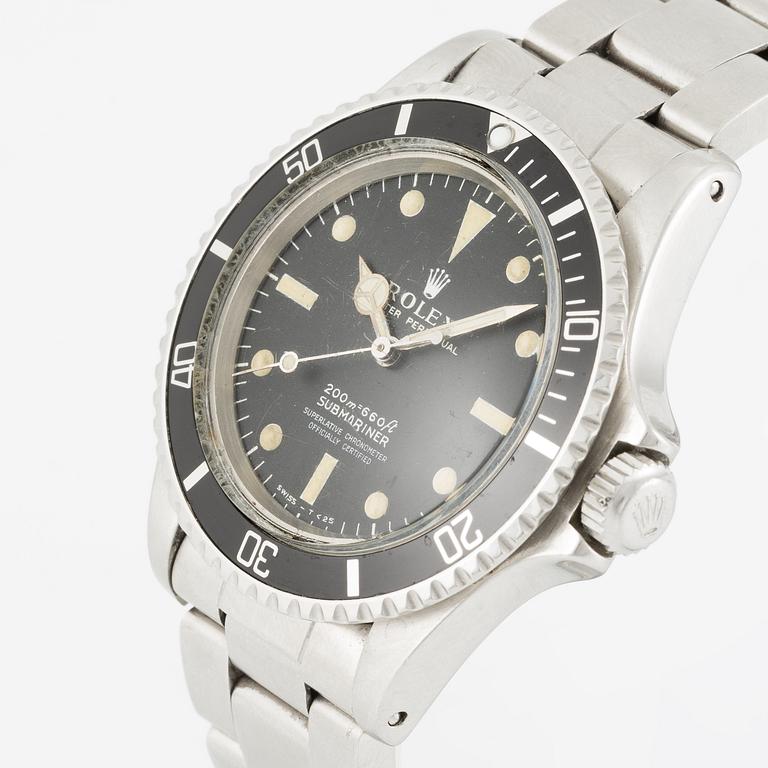Rolex, Submariner, "Matte Meters First", ca 1967.
Storlek: 40 mm
Material: stål
Urverk: automatisk, caliber 1570 (ROW)
År: cirka 1967
Glas: plexiglas
Armband: Oysterlänk, viklås, ref. 93150-S U11/593
Referensnummer: 5512
Serienummer: 1'546'190
Verknummer: 47'190
Boettnummer: 5513/VI.66
Endast 17 338 exemplar av referens 5512 tillverkades, (jämfört med 151 449 exemplar av referens 5513).
Viklås från cirka 1998. Nyare insert. Åldersrelaterat slitage.
Urverket fungerar vid katalogiseringstidpunkten, Bukowskis garanterar inte att urverket kommer att fungera i framtiden. Observera att urverket inte har testats för tidsprecision och kan behöva servas på köparens bekostnad. Klockorna har öppnats för att undersöka urverket, därför ges inga garantier för att klockorna är vattenresistenta. Potentiella köpare bör inspektera varje klocka för att försäkra sig om dess skick. För mer information, vänligen läs våra Köpvillkor.
Proveniens
Samma ägare sedan cirka 30 år.
Övrig information
A Transitional Era – From Gilt to Matte Dials
The mid-to-late 1960s was a pivotal period in the evolution of the Rolex Submariner, as the brand transitioned from the earlier glossy gilt dials with gold lettering to the matte dials with white text that defined the later models. This shift marked a move towards a more modern, tool-watch aesthetic, reflecting the Submariner’s growing role as a professional dive watch.
One of the most notable changes during this period was the "meters first" depth rating, which appears as 200m = 660ft on the dial. This format was standard on Rolex dive watches until the late 1960s when the brand switched to "feet first" (660ft = 200m), likely to align with the preferences of the American market. As a result, "meters first" dials are rarer and are especially desirable among collectors, as they represent an important transitional phase in the Submariner’s history.
This particular watch features the Secondary Printing variation, a fascinating detail in Rolex’s dial production process. Unlike the "Neat Font" dials, where all text was printed at the same time, the "Superlative Chronometer Officially Certified" text on Secondary Printing dials was applied separately in a later printing phase.
This method often led to subtle variations in the ink texture, alignment, or spacing of the final text. Some examples exhibit slightly raised or uneven lettering, making each dial somewhat unique.
These small production inconsistencies add a layer of charm and individuality to each piece, making them particularly intriguing for vintage Rolex collectors who appreciate the nuances of dial printing techniques.
Powering this watch is the Rolex Caliber 1570, chronometer-certified movement introduced in the 1960s. This particular example is also signed 'ROW,' Rolex’s import code for the U.S. market.






























































